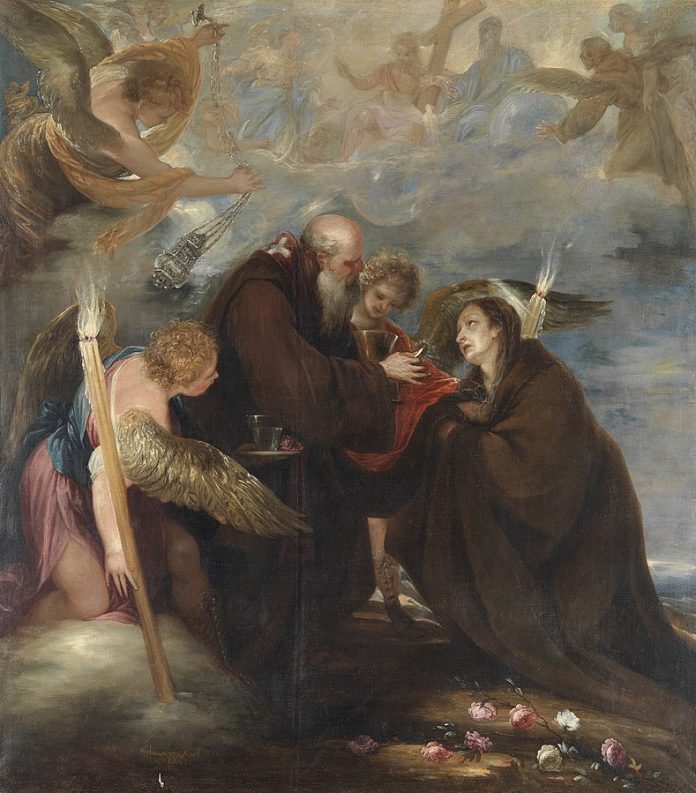
Saint Rose of Viterbo (1233 – 1251) was a recluse in the Italian commune from which she takes her name, and which was contested during her lifetime between the forces of the Emperor, Frederick II, the stupor mundi – the wonder of the world – and forces of the Pope. She sided with the Pope, not for political reasons, but spiritual, for which her family was exiled, predicting the death of the anti-papal Emperor, who dabbled in all sorts of religious syncretism. Our Lady appeared to Rose, asking her to preach penance, and join the Third Order Franciscans – she would do so, but spent much of her life in her father’s house as a self-enclosed hermit. Miracles abounded, during and after her life – at one point, standing in an open pyre unscathed, to defeat, and convert, a sorceress – and, like so many of the very good, died young, at around the age of twenty, in 1251. She had wanted to enter the Poor Clares, but could not afford the required dowry, predicting that she would be enrolled after her death. Sure enough, in 1257, Pope Alexander IV ordered her body not only moved to the convent, but that the convent be named after her. She was canonized by Pope Calixtus III in 1457.

Date 16 October 2020
Source Own work
Author SirFlemeingtonz
wikipedia.org
Saint Marinus, or Marino (+366), was also a hermit, who lived also during the tumultuous times (have there been any other such times?) of the fourth century. By legend a stonemason, he fled from his native Croatia during the persecution of Diocletian, becoming a hermit on Mount Titano, praying for the Church and for his fellow suffering Christians, many of whom were forced labourers – basically, slaves – of the Emperor. A monastery grew up around the soon-famous hermit, especially after the legalization of Christianity by Constantine, and, from the monastery, the Republic of San Marino – of course, named after our saint – developed around the monastery. Ironically, San Marino is landlocked, even though our saint’s name means ‘of the sea’. Then again, they’re not that far from the sea. San Marino never developed all that much geographically, as it is to this day the fifth-smallest country in the world – a scant 23 square miles – but is quite wealthy, the tenth richest by GDP, at which our saint might demur. Supposedly, his last words were relinquo vos liberos ab utroque homine – I leave you free from both men, words which were taken to mean freedom from domination either by the Pope or the Emperor, and which San Marinians have adopted as their motto. Saints really do change the world.
Saints Rose and Marino, orate pro nobis! +
(source, in partibus: wikipedia.org)
